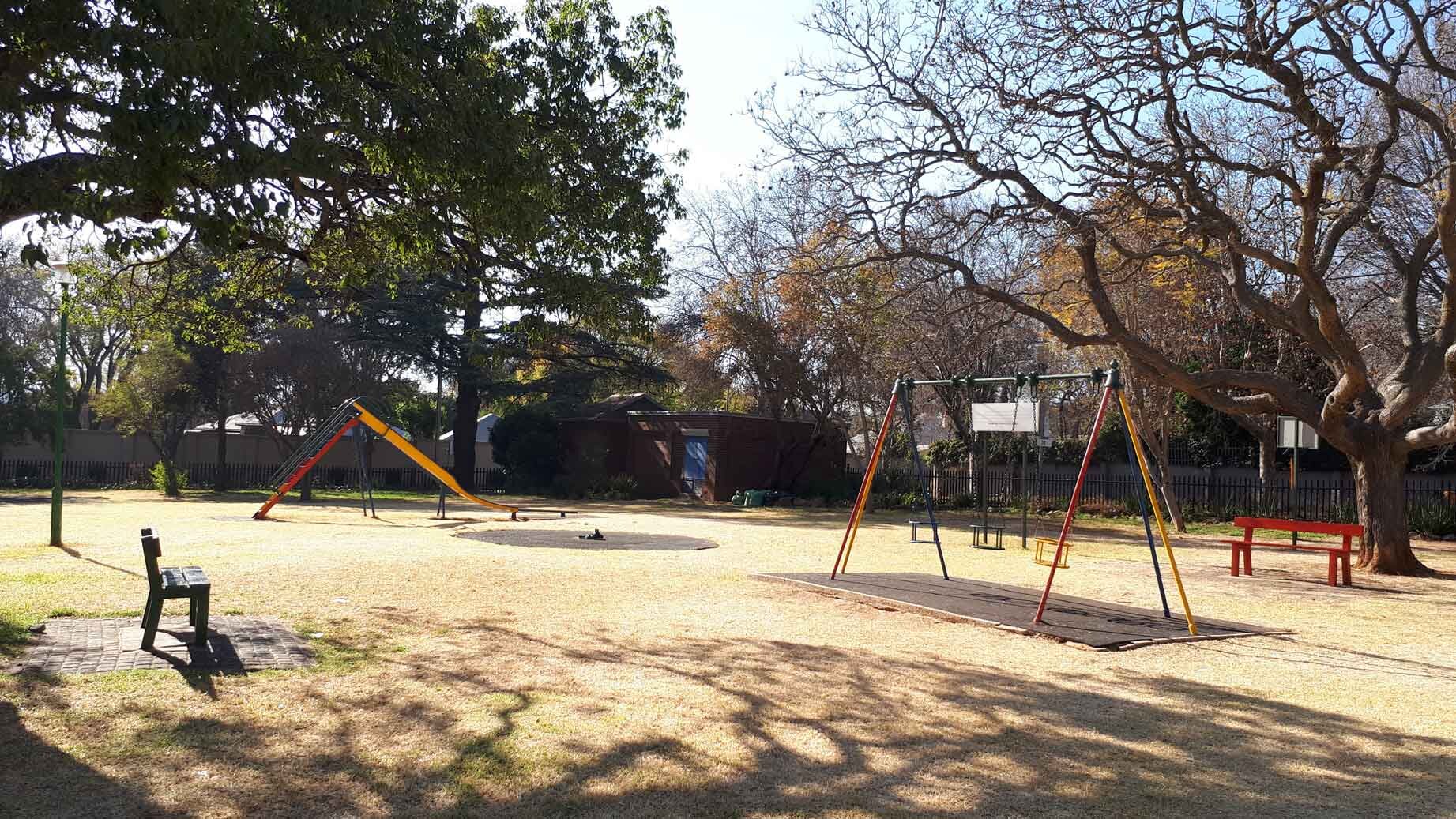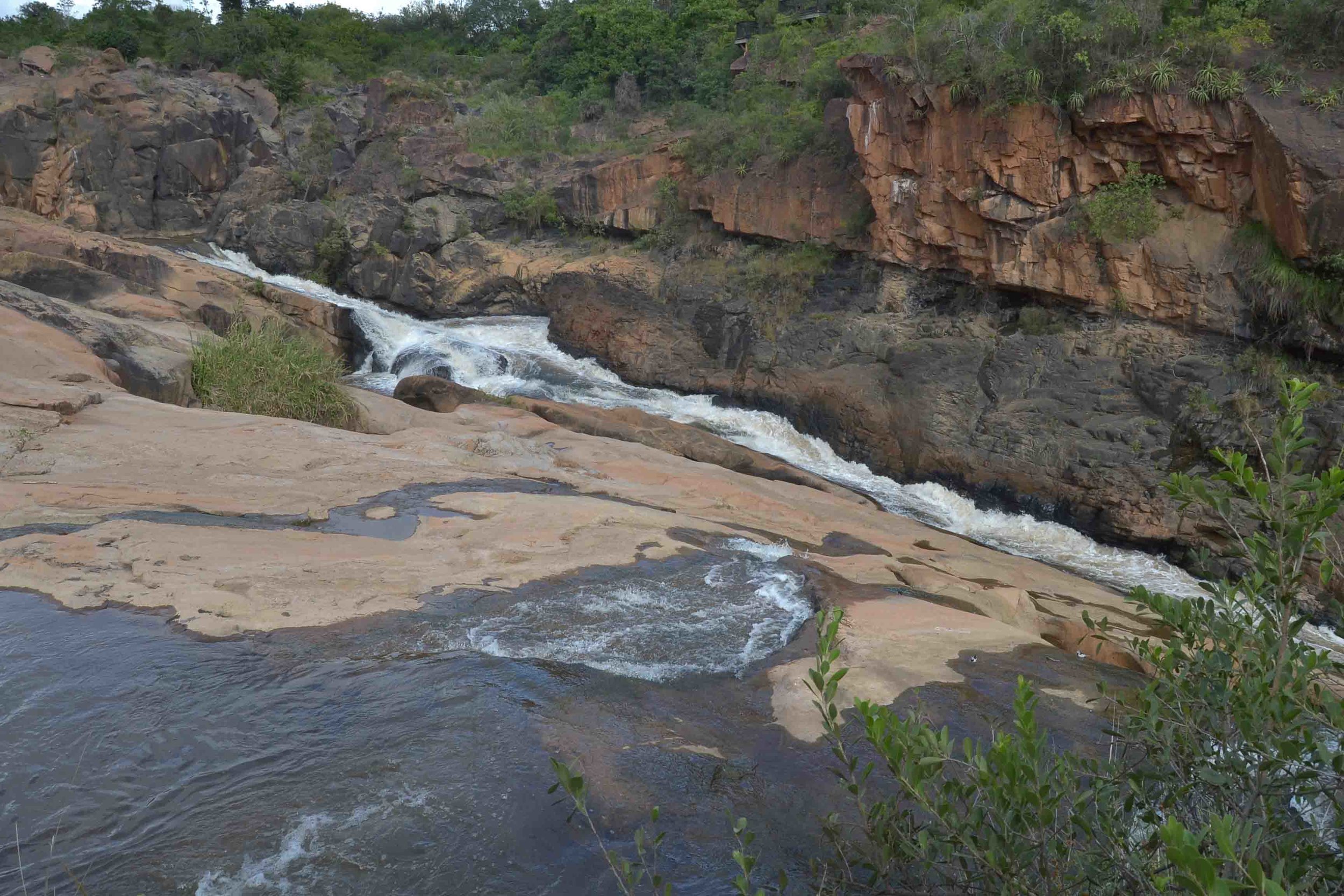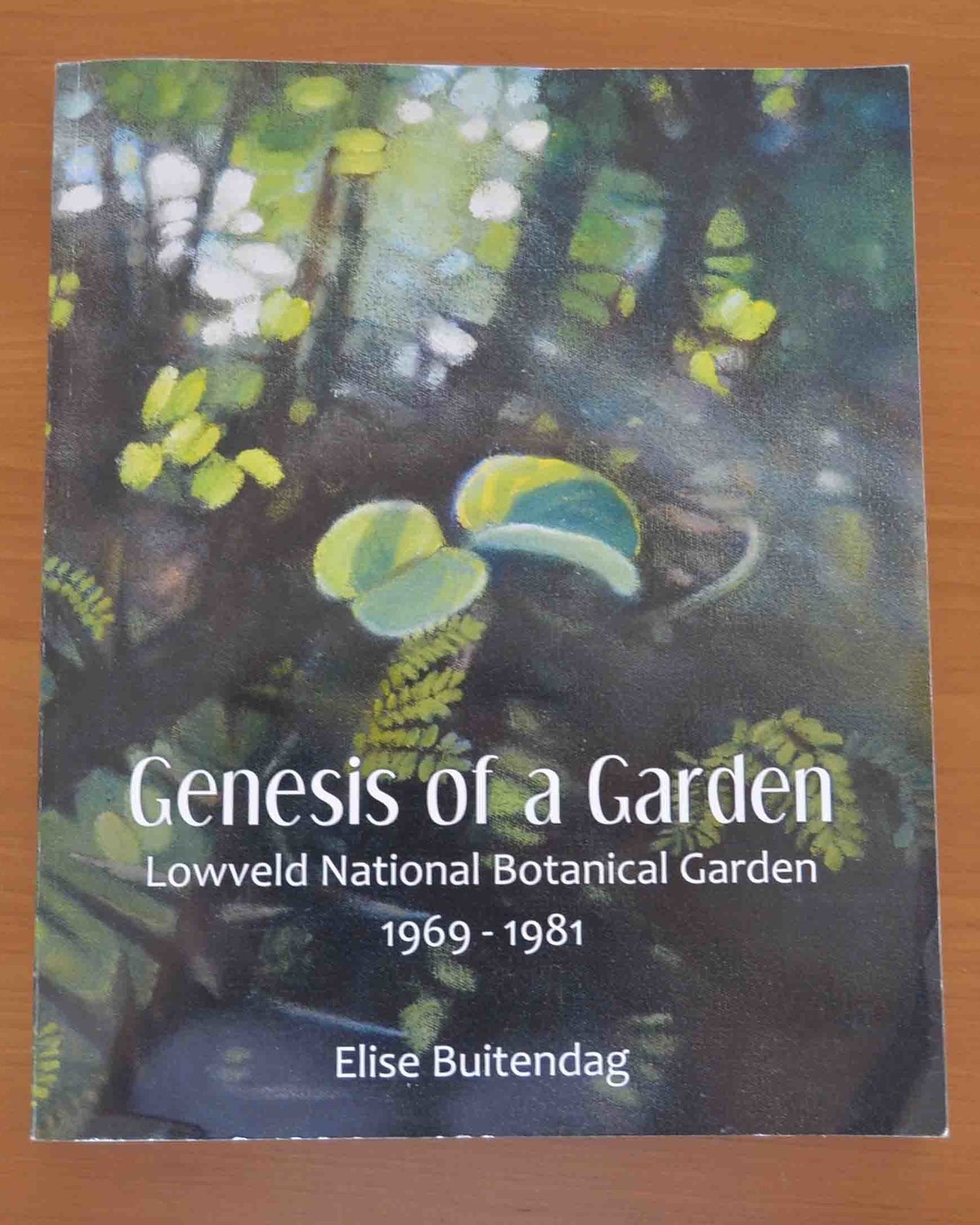As a landscape architect I am always analyzing outdoor spaces and trying to pinpoint what makes them attractive, enjoyable and successful. What changes a ‘space’ into a ‘place’? Why are people drawn to a place and what makes them come back again? What attributes does a public space need to become an integral part of a community and how does one achieve this?
George Hay Park is located in the heart of Parkview, Johannesburg and at first sight it can seem to be an ordinary rectangular open area of lawn with some trees that is not very different to many other parks in Johannesburg. However, on closer inspection you will find that this Park is a place loved by the community and where many residents spend regular time with friends, walk their dogs, share special celebrations and enjoy time together with their children on the playground.
Here are several reasons that contribute to the success of George Hay Park:
Location
Situated in the centre of a residential suburb with grid-like layout the park is within easy walking distance and far enough from busy roads to be secluded but accessible. There is also a road all around the Park which makes for increased visibility (frequented by private security companies patrolling the neighbourhood) adding to a feeling of safety. Cars can park along the street next to where they will be spending time in the Park. Parkview itself has a strong sense of place and rich history which adds to the overall atmosphere of the park.
2. Terrain and LayoutThe physical characteristics of the site can be described as rectangular and flat with many large trees providing shade. It is comprised of a large lawn area, dotted with large trees, includes areas with children’s play equipment and has a strip of indigenous planting along three of the edges.
3. Edges
The Park is surrounded by a black metal fence on three sides and this contributes to the feeling of containment and protection that one feels when inside the Park. This is especially important for keeping small children safe as it prevents them from running into the street. The northern most boundary of the park is where the Columbas Church is located and this edge has a gum pole fence that is a more permeable edge and creates a sense of connection between the church and the Park. (http://stcolumbas.org.za/ )
4. Facilities
As mentioned the park contains play equipment for children of varying ages. The play equipment for smaller children has baby swings, a small slide, a see-saw and monkey bars while the play equipment for older kids has larger swings, a large slide and a roundabout. There is a small basketball court as well as outdoor gym equipment. A beautiful rustic tree house has been built around a large existing tree creating a wonderful space for children to have imaginative play. There are many benches that one can sit on and water is provided in bowls for visiting dogs.
Organic Tree House Built around Existing Tree
5. Use
The Park is used for a variety of small, personal functions (birthday parties, baby showers) and also provides a space for large scale community gatherings. Several well-supported events take place in the park throughout the year, some of which occur annually, including: Halloween Event, Christmas Market and Potjiekos Competition. These events have the added benefit of strenghtening realtionships within the community and celebrating the neighbourhood. It creates memories that become associations which then contributes to the sense of attachment and belonging that a person has to a place.
Halloween Community Event in George Hay Park (photo taken 31 October 2019)
6. Community Ownership
This must be one of the most important characteristics that set this park apart. The Parkview Residents Association) PRA is actively involved in the maintenance and running of George Hay Park and without their involvement it is clear that the park would not be what it is today.
“Beginning in 2007, and continuing ever since, many different projects have been undertaken including the renovation and staffing of the toilet block, the repainting of the perimeter fence, the repair of the drinking fountain, the renovation and securing of the storeroom, the installation of benches and tables, annual planting of indigenous trees, often planned around Arbor Week in September and the repair and installation of new playground equipment. In 2008 the need for a permanent but casual parkkeeper was recognised as a way to keep the park clean and safe on a daily basis. Funds were raised by asking those residents who live on the perimeter of the park (and any others willing to do so) to commit to a monthly contribution. Daily duties include making sure the bins are cleared (and any recyclables removed and the dog poo removed. Other duties include watering the trees and keeping their bases free of grass, feeding the trees, weeding the pavements and pruning bushes and trees where necessary, watering the grass in early summer and raking and piling leaves in winter.” Reference: (http://www.parkview.org.za/content/george-hay-park)
It is evident that a successful park needs many components in order to provide a place for its users to find enjoyment, to feel safe and to take ownership of a place so that they keep returning. When many people use a park it feels safer as there are always other users and it’s presence becomes well embedded in their minds and hearts.
Vegetable Garden Initiative
Indigenous planting along edges - pictured here is Anisodontea scabrosa and Aloe spp.
Other blog posts about Parks in Johannesburg:






























